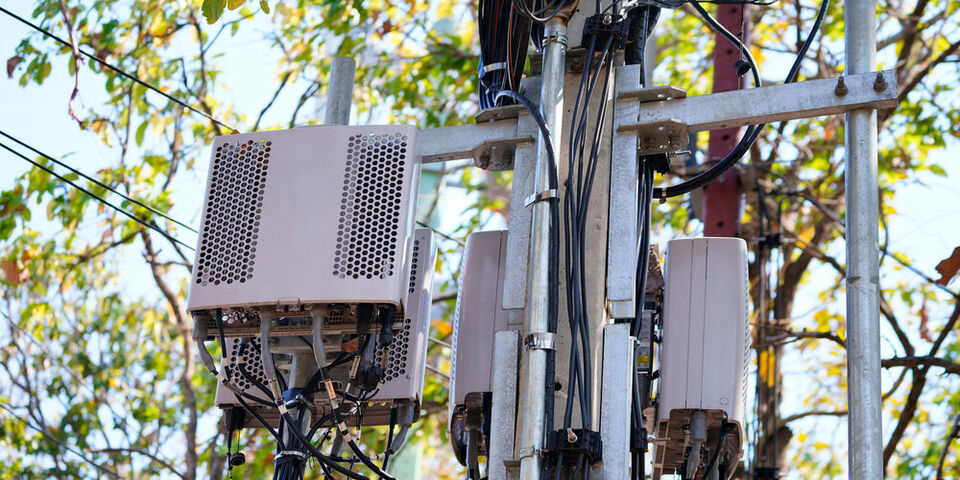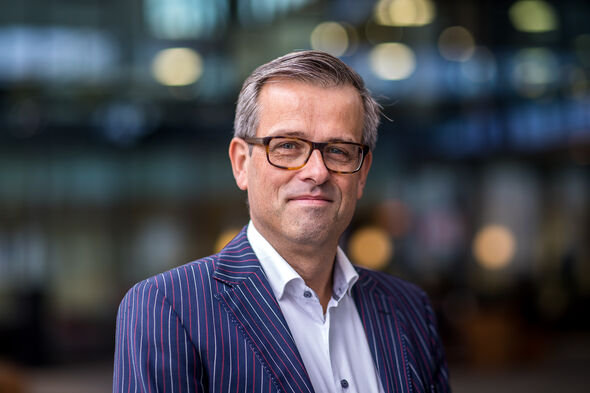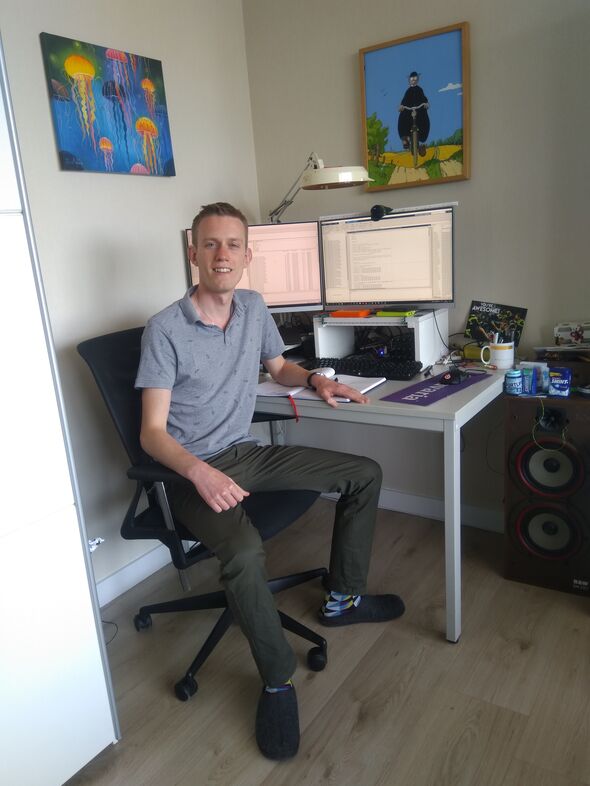Prof Talk | Having confidence in 5G
With the advent of the 5G network we are also seeing an increase in the protest voiced against this superfast network for mobile internet. The last weeks in the Netherlands dozens of phone masts were set alight and ever more posts about the negative effects of 5G are appearing on social media. For example, some people even believe in a connection with coronavirus. TU/e professor of antenna technology Bart Smolders points out that, “5G is absolutely safe, but we must continue to research the effects of exposure.”
Within the Electromagnetism group run by Bart Smolders a great deal of research on 5G and other future mobile networks is being conducted. Together with NXP and Ericsson, they have developed a new antenna technique capable of sending and receiving data in a very targeted way so that before long everyone can be provided with 5G. But what makes 5G so different from our current 4G network?
“For the time being, absolutely nothing,” says Smolders. “Besides, as yet in the Netherlands the 5G networks are hardly being used, so destroying phone masts is a pointless activity.” As of last Tuesday Vodafone started with 5G and does that using a method called 'spectrum sharing' and uses existing frequencies for it. As a result of that new masts will not immediately be necessary (see the box beneath this article).
First a brief lecture. The new 5G aims to do three things, Smolders explains. Suppose you use your cell phone to send a short film or receive a message. In that case, the antenna in your smartphone will contact an antenna at a nearby base station. An antenna converts electrical signals into radio waves - electromagnetic radiation - so that it can send and receive information wirelessly.
“We are making increasing use of wireless communication. To watch videos on our phones, for smart doorbells, and pretty soon robots and self-driving cars will rely on it. So, firstly, with 5G we can send more data much more quickly. Secondly, 5G gives us the chance to build in a communication delay of less than a millisecond, which qualifies as low latency. This is enough time for self-driving cars and robots to safely gather information about their environment. Very important for Industry 4.0, where smart factories will be producing smart products. In this work they will draw on the Internet of Things, which is the third aim of 5G. More and more devices are now connected with each other. Using 5G, sensors will be able to send data great distances with minimal energy consumption, which will create a stable and efficient network.”
150 meters
For the first two applications no frequency bands are needed other than those required by the 3G or 4G networks; in the Netherlands in the coming years, therefore, the present band widths of 700, 1400 and 2100 megahertz will be used. It will be three to five years before the switch is made to the higher radio frequencies of 3.5 and 26 gigahertz. “The higher frequency reduces the signal's reach and this means that more and different antennas are needed,” explains Smolders. “Whereas antennas are currently sited every few kilometers, we'll soon need one every 150 meters. And even though the new antennas in total won't emit any more radiation than is currently the case, people are concerned about seeing many more on our streets.”
Fear of radiation
Tom van Nunen and Elles Raaijmakers, doctoral candidates in the Electromagnetism group, are familiar with this fear of radiation. Raaijmakers conducts research on the effects of electromagnetic radiation on brain cells as part of a broader study of brain stimulation and she is often asked how dangerous is 5G radiation. “Even just the word 'radiation' is enough to worry people; it sounds very risky. But light is also radiation. So we could say that we are using a form of invisible light. And it is just as well that it is invisible, otherwise we'd be surrounded all day long by flashes of light. Not at all pleasant.”
“Terms take on a life of their own on social media,” adds Van Nunen. He is keenly following the anti-5G discussions and uses his scientific knowledge to try to debunk the alarmist stories. “Electromagnetic radiation is something really very different from radioactive radiation. A lot of stories are being spread by people who lack any relevant background; measurements are being taken using equipment bought on eBay for a few tenners. And academic papers are often cited indiscriminately - not infrequently, these are papers of little relevance or that have not been peer reviewed. What's more, you can see that conclusions are being interpreted incorrectly. When a researcher says something like ‘It could be possible that… and more research is needed’ the meaning is soon twisted and becomes ‘It is not safe, therefore it is harmful.’ All shades of meaning disappear.”
Fundamentally impossible
Watertight proof that 5G electromagnetic radiation has no harmful effects on the human body is fundamentally impossible to deliver, say all three: Raaijmakers, van Nunen and Smolders. However, there is much to indicate that the waves cannot simply penetrate the body, as many opponents believe.
“In my research I am seeing that EM waves do something to brain cells,” says Raaijmakers. “But just try generating the electromagnetic field at a specific site in the brain. For transcranial magnetic (brain) stimulation (TMS), for example, you need short pulses with a huge peak capacity because those fields rebound off the body. In the Erasmus Medical Center in Rotterdam they are using radio waves with the same frequency as WiFi in order to warm the bodies of patients receiving a particular type of chemotherapy, in order to increase effectiveness. To do this, they need whole structures involving water bags and focused antennas, and with a lot of effort they are achieving a little bit of success. I think that speaks volumes.”
According to Smolders, over the past twenty-five years that we've been using networks up to and including 4G - the same frequency, for the time being, as the new 5G - no proven health risks have been revealed. “We should not be scared of new technology. All the same, here in the Netherlands we - the universities and TNO - should still keep a finger on the pulse when it comes to electromagnetic radiation and health effects, and we should take part in longitudinal national and international research. This should be supported by government funding. And let's realize, now more than ever, that wireless communication has brought us great benefits. Without the internet, the economy would long since have collapsed in these corona times. We are seeing that we can work from home more than we thought and that it is not always necessary to travel hither and thither. So let's appreciate 5G as a fine piece of technology that can take this trend forward,” says Smolders.
Vodafone makes 5G possible with 'spectrum sharing'
With the use of a method that is known as 'spectrum sharing' Vodafone already started with 5G in the Netherlands on Tuesday. On the site of Vodafone you can read how this works: 'This means that Vodafone is cleverly dividing its existing spectrum between 4G and 5G using Ericsson technology. Both protocols will continue to exist side by side. Moreover, because Vodafone will make use of existing frequencies, new masts will not be immediately necessary. This makes 'spectrum sharing' ideal for introducing 5G into the Vodafone network as a springboard for further 5G developments in the coming years’. Customers with 5G in their subscription and a suitable device with the latest software will be able to use 5G within a week in the coverage area.





Discussion